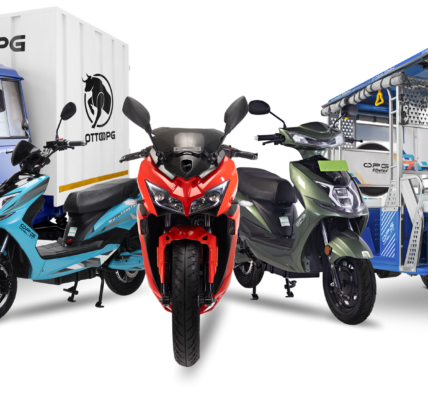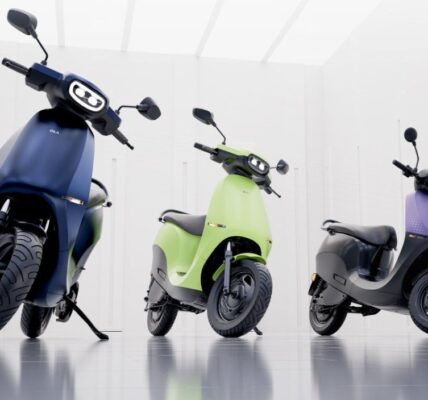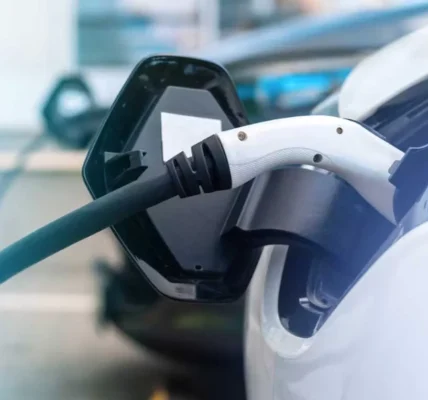Kawasaki has been clear in its intention to bring electric motorcycles into its streetbike lineup as soon as possible and today it made good on that promise by announcing two all-new electric motorcycles: the Ninja e-1 and Z e-1. Designed for urban commuting, both bikes are loosely based on Kawasaki’s 400cc models but open the door to a completely different riding experience compared to their gas-powered counterparts.
Interestingly, Kawasaki goes as far as to mention the electric scooters and bicycles that have become increasingly popular over the years, saying, “These electric-powered motorcycles are the real deal and offer superior performance over an electric scooter or bicycle.” It’s no secret that Team Green, like all manufacturers, are intent on reaching new riders, and these two bikes are very much a part of that mission.
Electric Motor and Batteries
The Ninja e-1 and Z e-1 are powered by a brushless electric motor rated at 5.0kW, with a max rating of 9.0kW. Beyond the obvious benefit of being clean, quiet, and cool-running, Kawasaki says the motor is intended to offer strong low-end power and an immediate throttle response for quick acceleration. This is a key component to making the bikes perform well in stop-and-go riding situations around town.
Power is transferred from the motor through a primary reduction gear to the chain final drive. The single-ratio transmission and electric motor eliminate need for a clutch or shift lever, but Kawasaki has kept the rear brake foot-operated, rather than moving the lever to the now-bare left handlebar, where a scooter’s rear brake is and those of most e-moto bikes are typically found.
Dual lithium-ion batteries are mounted in a parallel arrangement, below the storage box that sits where the fuel tank would traditionally be. Each removable battery weighs a claimed 25.3 pounds, offers a nominal capacity of 30Ah, and nominal nominal voltage of 50.4V. This makes total battery capacity 60Ah.
Removing the batteries is done by unlocking and opening the storage compartment, unlocking the battery cover, and pulling them out, a process Kawasaki says it focused on in order to ensure ease of use. Another benefit to the removable batteries is that they can be taken indoors for charging. Consider street parking your motorcycle in a garageless urban situation—the batteries could be carried to your living space and charged indoors.
Speaking of charging, the batteries can be charged in one of three ways: via a charging dock, without a charging dock, or with the batteries left in place, by using an underseat charging adapter. One battery can be charged at a time, unless a second charger is used, in which case the batteries can be charged simultaneously.
Total charge time is a claimed 7.4 hours, or 3.7 hours per battery. Kawasaki claims 1.6 hours per battery for a partial charge, defined as taking the battery from 20 to 85 percent. Charging appears to be Level 1 only, that is, plugging into a standard 120V wall socket. The charger itself is an external unit that would need to be carried with you, if you intended to charge on the road.
Regenerative braking allows energy generated during deceleration to be recycled back to the battery once the rider rolls off the throttle. The feature kicks in when the batteries are at 60 percent charge, then gradually tapers off as they approach a full charge. Range is a claimed 41 miles, which drives home the point that these bikes are very much meant for quick trips around town.
A separate 12V battery is used to turn the screen on and to operate the lights, but the bike will not switch to “Ready” without the lithium-ion batteries in place.
Riding Modes
The Ninja e-1 and Z e-1 have Road and Eco riding modes, and top speeds vary depending on the model, with the fully faired Ninja capable of a slightly higher top speed in Road (52 mph) and Eco (37 mph). For comparison, the Z e-1′s top speed is approximately 49 mph in Road and 35 mph in Eco. The rider can change modes via a handlebar-mounted switch at any time, as long as the batteries’ state of charge is above 35 percent. Once charge has dropped below that, the bike will transition to “limited-power operation.”
For added versatility, both bikes are equipped with an e-boost feature that increases power for stronger acceleration and higher top speed. The feature is activated by a button on the handlebar and can be used for up to 15 seconds at a time, in order to limit the impact on range and battery temperature. E-boost increases Ninja e-1 top speed to 65 mph in Road and 45 mph in Eco. Similarly, the Z e-1 is capable of 65 mph in Road and 42 mph in Eco mode when using e-boost.
Kawasaki has also developed a Walk mode for both bikes. With the system activated, riders can move the bike forward at approximately 3.1 mph, or in reverse at roughly 1.8 mph.
Chassis
In an attempt to keep curb weight as low as possible, Kawasaki is using a trellis-style frame that’s loosely inspired by chassis used elsewhere in its lineup, but with revised rigidity and low mounting position for the electric motors, which helps lower the center of gravity.
Dimensions are nearly the same as they are on the Ninja 400: The wheelbase is 53.9 inches, rake is 24.4 degrees, and trail is 3.7 inches. The goal? Ensure that the bike is lightweight and sporty, with a similar feel to the Ninja 400 that has been a huge success for Kawasaki. A 41mm fork and preload-adjustable shock are tuned for urban riding.
A two-piston caliper bites on a single 290mm disc up front, and a two-piston caliper works on a 220mm disc out back. Tire sizes are 100/80-17 (front) and 130/70-17 (rear).
Importantly, claimed curb weight is down when compared to the Ninja 400 and Z400 models, with the Ninja e-1 weighing in at 309 pounds, and the Z e-1 weighing 298 pounds. Compare that to the ABS-equipped Ninja 400, which weighs 362 pounds, and the Z400, which curiously weighs in at 364 pounds.
Ergonomics and Styling
Kawasaki has gotten quite good at building nearly identical packages and making them distinct only in terms of look, and that continues to be the case here, with the Ninja e-1 and Z e-1 differing only in terms of bodywork and riding position. The biggest difference here is in the handlebars: The Ninja e-1′s clip-on style handlebars are attached to the top of the fork tubes, whereas the Z e-1 uses a tall, one-piece handlebar that puts the rider in a more upright position.
More important is that both bikes have a 5-liter storage box, which will fit an assortment of small items and come in handy when running errands around town. This is, of course, quite a bit smaller than the 15-liter storage compartment on Honda’s Navi.
Conveniences don’t end there, however, as the bikes come equipped with a 4.3-inch TFT display and Bluetooth technology that enables riders to connect to their motorcycle wirelessly.
Pricing and Availability
The order period is now open for Ninja e-1 and Z e-1 models, with Kawasaki saying that bikes will be available this month. MSRP for the Z e-1 is $7,299, while the Ninja e-1 will go for $7,599.
Both bikes are available in just one color option: Metallic Bright Silver/Metallic Matte Lime Green/Ebony.







